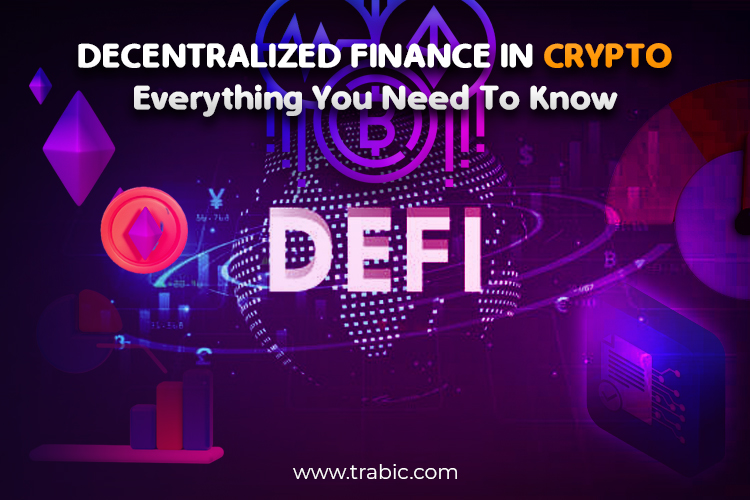What is Decentralized Finance (DeFi)?
DeFi (Decentralized finance) refers to switching to peer-to-peer finance enabled by decentralized technology built on the Ethereum blockchain from traditional centralized financial systems. From lending and borrowing platforms to stablecoins to tokenized BTC(Bitcoin ), the DeFi ecosystem has launched an extensive network of integration protocols and financial instruments.
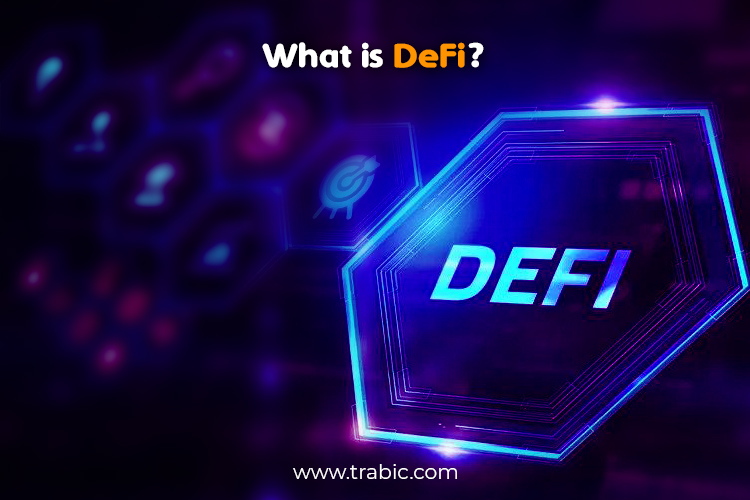
DeFi (Decentralized finance) has emerged as the most dynamic sector in the blockchain space, with a wide variety of use cases for developers, individuals, and institutions with over $13 billion worth currently locked in Ethereum smart contracts. While our traditional financial system runs on a centralized infrastructure controlled by central authorities, institutions, and intermediaries, decentralized finance is powered by code on the Ethereum blockchain’s decentralized infrastructure.
DeFi (Decentralized Finance) developers can initiate many platforms and financial protocols that run automatedly and are accessible to anyone with an internet connection through the deployment of enduring intelligent contracts on Ethereum. Defi’s breakthrough is using cryptocurrencies in ways not possible with fiat currency or real-world assets. Synthetic assets, decentralized exchanges, and flash loans are entirely new applications that can only exist on the blockchain. This paradigm shift in financial infrastructure offers many advantages regarding risk, confidence, and opportunity.
Why use DeFi and avoid traditional finance?
Decentralized finance may not add much new to financial instruments. However, if it takes off, it could revolutionize how financial instruments are exchanged. Still, what is the reason for fixing an efficient and functionally secure system? Banks and financial institutions help move funds from one place to another, but the routes are indirect. This chain can slow down certain transactions, and each provider charges service fees. Moreover, because we rely on third-party services (each of which is subject to human error, technical glitches, hardware malfunctions, and security breaches), no service is 100% secure.
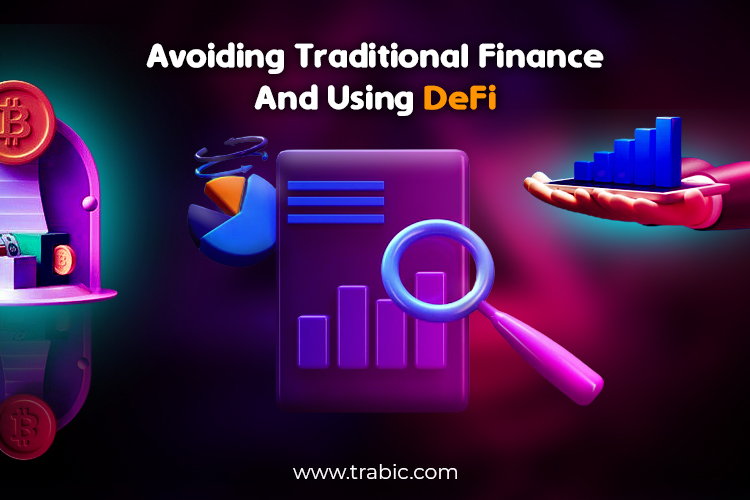
Individuals and businesses constantly seek faster, safer, and more economical ways to conduct peer-to-peer (P2P) financial transactions. What DeFi (Decentralized Finance) has to offer goes far beyond incremental improvements (as opposed to the advent of cash machines and direct deposit, for example). We promise innovation that we could not achieve with conventional systems and technologies.
How does DeFi (Decentralized Finance) work?
By building a financial system on a blockchain-based network and eliminating intermediaries, transactions become more direct. Significantly reduce service charges. Also, asset transfers and exchanges are virtually tamper-proof. A blockchain is a digital ledger shared and updated by all participating computers (aka nodes). All transactions entering the blockchain are verified by selected nodes participating in the network. All blocks are encrypted, and with the block’s closing, its contents are permanently sealed and cannot be changed. Any attempt to change the contents of the block will result in a warning on every computer on the network (there could be thousands).
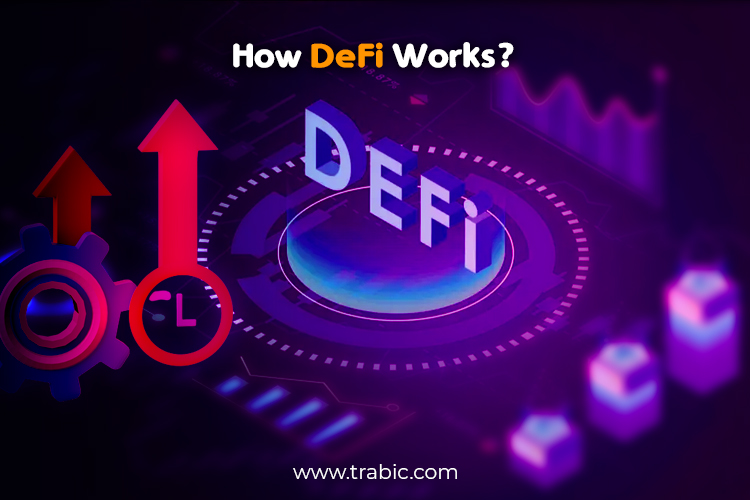
This is what makes blockchain virtually impenetrable and secure. Comparing this to today’s financial system, even the most efficient, price-competitive, and secure banking processes cannot provide these benefits at the level that blockchain networks can. DeFi (Decentralized Finance) can do better than this. Thanks to blockchain, individuals and businesses can trade other types of assets inaccessible through traditional financial means, such as smart contracts and non-fungible tokens.
What are the advantages of decentralized finance?
Decentralized finance advantage of the critical Ethereum blockchain principles to increase transparency and financial security, unlock growth opportunities and liquidity, and support an integrated and standardized economic system.
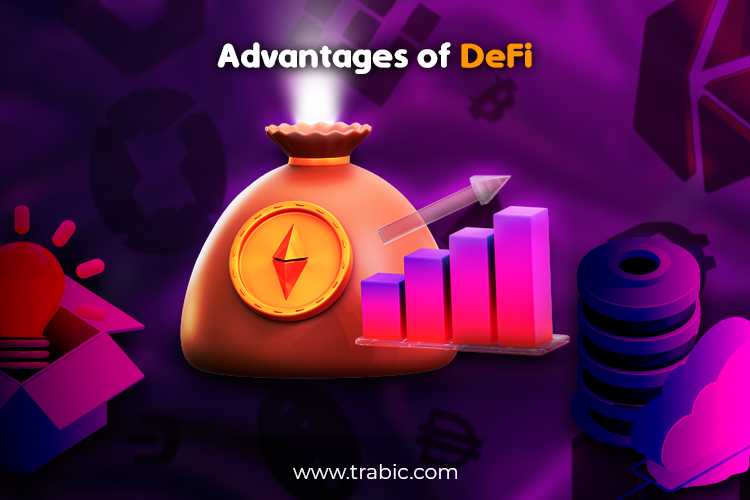
- Highly program-controlled smart contracts automate execution and enable the creation of new digital assets and financial instruments.
- Tamper-proof data coordination across the blockchain’s decentralized architecture improves security and audibility.
- Ethereum’s composable software stack builds DeFi (Decentralized Finance) protocols and applications to integrate and complement each other. DeFi allows developers and product teams to build on existing protocols, customize interfaces, and integrate third-party applications. For this reason, people often refer to his DeFi protocol as “Money Lego.”
- On the public Ethereum blockchain, all transactions are broadcast and verified by others on the network (Note: Ethereum addresses are pseudo-anonymous encrypted keys). This level of transparency on transaction data enables rich data analysis and makes network activity available to all users. Ethereum and the DeFi protocols that run on it are also created with an open-source code that anyone can view, audit, and build on.
- Unlike traditional finance, DeFi (Decentralized finance) is defined by its open, permissionless access. With a cryptocurrency wallet and an internet connection, you can access his DeFi application built on Ethereum, regardless of geography, and often without minimal funds.
- Using Web3 wallets such as MetaMask to interact with permissionless financial applications and protocols, DeFi (Decentralized finance) market participants always control their assets and personal data.
What are decentralized finance use cases?
From DAOs to synthetic assets, decentralized financial protocols have opened up a world of new economic activities and opportunities for users worldwide. The comprehensive list of use cases below proves that DeFi is much more than a unique ecosystem of projects. Instead, it is a large-scale, integrated effort to build a parallel financial system on Ethereum Blockchain that rivals centralized services because it is more accessible, resilient, and transparent.
Asset management
With DeFi protocols, you become the custodian of your crypto assets. Crypto wallets such as MetaMask, Gnosis Safe, and Argent allow you to interact quickly and securely with decentralized applications, from buying, selling, and transferring crypto to earning interest on digital assets. In the DeFi space, you have possession of your data. For example, MetaMask stores your seed phrases, passwords, and private keys in encrypted form locally on your device, ensuring that only you can access your accounts and data.
Things change for an organization that has raised institutional-level requirements for allocating capital to its DeFi (Decentralized finance). For these corporations, wallets like MetaMask Institutional facilitate crypto economic research, pre-and post-trade compliance, optimal trade execution, reporting, and crypto management.
Compliance and KYT
In traditional finance, anti-money laundering (AML) and counter-terrorist financing (CFT) compliance rely on know-your-customer (KYC) guidelines. In the DeFi space, Ethereum’s decentralized infrastructure will enable next-generation compliance analytics on the behavior of participating addresses rather than participant identities. These KYT (Know Your Transaction), like those provided by MetaMask institutionalized, assists assess risk in real-time and safeguards against fraudulence and financial crimes.
DAOs
DAOs are the decentralized autonomous organizations that cooperate according to clear rules encrypted on the Ethereum blockchain, eradicating the need for a centralized governing authority. Several protocols popular in the DeFi space, such as Maker and Compound, have launched DAOs to raise funds, manage financial operations, and decentralize governance to the community.
Data and analytics
With unprecedented transparency on transactional network and data activity, DeFi (Decentralized Finance) protocols provide extraordinary advantages for analysis, data discovery, and decision-making around financial opportunity and management of risk. The volatile growth of new DeFi applications has led to numerous tools, such as DeFi Pulse, which help users track the value locked into their DeFi protocol, assess platform risk, and compare liquidity and yields.
Derivatives
Smart contracts based on Ethereum Blockchain enable the origination of tokenized derivatives whose value is derived from the underlying asset’s performance and whose counterparty agreement is embedded in the code. DeFi derivatives can represent not only cryptocurrencies but real-world assets such as bonds, commodities and fiat currencies.
Developer and infrastructure tools
One of the essential composition regulations of DeFi protocols is composability. This means that the various components of your system can easily connect and interoperate. As you can see from her various integrated DeFi applications, composable code creates a powerful network effect, and the community continues to build on what others have built. Many liken the DeFi development process to building with Lego. From Truffle’s smart contract library to Infura’s API suite to Diligence’s security tools, Ethereum’s developer and product team can now build and launch his DeFi protocol with the full-stack tools and security integrations he needs.
DEX
A decentralized exchange (DEX) is a cryptocurrency exchange that operates without a central authority, allowing users to trade peer-to-peer and maintain control over their funds. DEXs reduce the risk of hacking, theft, and price manipulation, as the crypto assets are never under the control of the exchange itself. DEXs also provide token projects with access to liquidity, often comparable to centralized exchanges, without listing fees. Until a few years ago, projects paid millions to list their tokens on centralized exchanges.
Some exchanges implement some degree of decentralization, where centralized servers may host order books and other functions but do not hold users’ private keys. Popular DEXs in the DeFi space include AirSwap, Liquality, Mesa, Oasis, and Uniswap. DeFi liquidity data aggregators such as MetaMask Swaps optimize the trading experience by providing DeFi users with unparalleled insights to find the best gas price for a given quote. This is coupled with the lowest failure rate; the best price allows you to identify your estimate.
Game
The ability of Defi to configure has opened up opportunities for product developers to build her DeFi protocols directly into platforms for various verticals. Ethereum-based games have become a famous use case for decentralized finance due to their built-in economics and innovative incentive models. For example, PoolTogether is a lossless, audited savings lottery that allows users to purchase digital tickets by depositing their DAI stablecoin. DAI stablecoins are pooled together and lent to a compound money market protocol to earn interest.
Identity
Decentralized financial protocols combined with blockchain-based identity systems are an opportunity to give previously locked-out users access to a truly global economic system. This reduces collateral requirements and helps assess users’ creditworthiness through attributes related to reputation and financial activity rather than traditional data points such as homeownership and income. The DeFi space values data privacy around personally identifiable information and open access. Anyone having an internet connection can access DeFi applications while maintaining control over their data and assets.
Insurance
DeFi is still an emerging field, with risks associated with smart contract bugs and breaches. Many innovative insurance options help users purchase coverage and protect their property. For example, solutions like Nexus Mutual provide a smart contract cover that protects against the unintended use of smart contract codes.
Lending and borrowing
Lending and borrowing protocols within companions are among the most widely employed applications in the DeFi ecosystem. For example, the compound is an underlying algorithmic autonomous interest rate protocol that integrates with a long list of DeFi platforms such as PoolTogether, Argent, and Dharma. By offering an interest rate marketplace on Ethereum, Compound allows users to earn interest on the cryptocurrencies they contribute to the lending pool.
A composite smart contract automatically matches borrowers and lenders and calculates interest rates based on the ratio of assets borrowed to assets supplied. The compound is a compelling example of the exponential opportunity in the DeFi space. As more products unify the compound protocol, the more crypto based assets will be able to earn interest even if they are inactive.
Margin trading
While margin traders in traditional finance can leverage their trading by borrowing funds from their broker (which forms the collateral for the loan), DeFi margin trading has been disrupted by decentralized, non-custodial firms such as compound and dYdX. Powered by a lending protocol. Some have started to refer to the uprise of “autonomous money markets” in the DeFi (Decentralized Finance) ecosystem as smart contracts automate traditional brokerage activities.
Market place
The DeFi protocol supports online marketplaces allowing users to exchange products and services globally and peer-to-peer, ranging from freelance coding gigs to digital collectibles to real-world jewelry and apparel.
Payment
Peer-to-peer payments are an entire use case for the DeFi space and the blockchain ecosystem. Blockchain technology allows users to securely and directly exchange cryptocurrencies without intermediaries. DeFi payment solutions create a more open economic system for the unbanked and unbanked, helping large financial institutions streamline their market infrastructure and better serve their wholesale and retail customers.
Prediction market
Blockchain-based prediction markets leverage the wisdom of crowds and allow users to trade value by voting on event outcomes. Market prices become a crowdsourced indicator of the likeliness of an event. Augur, a popular DeFi (Decentralized Finance) betting platform, features prediction markets for election results, sports games, economic events, and more.
Savings
By plugging into the lending pool protocols like compound, many DeFi (Decentralized Finance) apps earn exponentially more revenue than traditional savings accounts, depending on dynamic interest rates linked to supply and demand. We offer interest-bearing accounts that allow Popular savings apps, including Argent, Dharma, and PoolTogether. This is a no-loss savings game where participants get all their money back whether they win or lose.
One of the DeFi (Decentralized Finance) activities that have blew up around these innovative savings mechanisms is “yield farming.” Yield farming relates to the users moving their idle crypto assets across many liquidity protocols for returns to maximize. The frenzy over DeFi (Decentralized Finance) yield farming has no shortage of memes.
Stablecoin
This cryptocurrency is pegged to a sturdy asset or basket of assets, such as fiat currency, gold, or other cryptocurrencies. Stablecoins were developed initially to lower the price volatility of cryptocurrencies and make blockchain a viable payment solution. They are currently being implemented across the DeFi (Decentralized Finance) space for institutional use cases like remittance payments, lending and borrowing platforms, and Central Bank Digital Currencies (CBDC).
Staking
As the Ethereum network transitions to a proof-of-stake consensus algorithm in Ethereum 2.0, users will have the opportunity to stake their ETH as a validator or through a staking provider and earn rewards. Staking on Eth2 is similar to an interest-bearing savings account. Stakers acquire rewards for testifying to blocks on the Ethereum protocol.
Synthetic assets
Synthetic assets are associated to stablecoins and offer exposure to other assets such as fiat currencies, gold, and cryptocurrencies. Tokens back them in Ethereum-based smart contracts with built-in contracts and incentive mechanisms. For example, the Synthetix protocol executes a total of 750% collateralized ratio, which surely helps the network absorb price shocks.
One of the main benefits of synthetic assets is their versatility. They can be used to replicate the value of virtually any type of asset, including stocks, commodities, and even real estate. This makes them an appealing option for investors who want to diversify their portfolio without incurring the costs and risks associated with buying and holding physical assets.
Tokenization
Tokenization is among the main ingredient of decentralized finance and a native feature of the Ethereum blockchain. Tokens not only revitalize the network but also unlock various economic possibilities. Tokens are digital assets created, issued, and managed on the blockchain. Tokens are designed for secure, instant transfer and can be programmed with various built-in features.
From real estate security tokens representing fragmented properties to platform-specific tokens that encourage the use of specific applications, Ethereum-based tokens provide a secure way for users worldwide to access, transact, and store value.
Transaction
Trading in the DeFi (Decentralized Finance) space encompasses various activities, from derivatives to margin trading to token swaps, across a growing network of exchanges, liquidity pools, and marketplace integrations. Crypto traders on decentralized exchanges benefit from reduced exchange fees, faster trade settlement, and complete protection of their assets.
